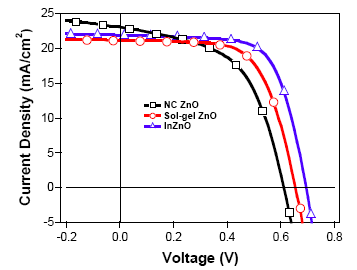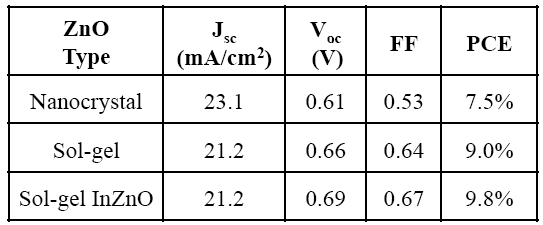Brandon MacDonald, Gerry Wilson, Scott Watkins, Jacek Jasieniak, Paul Mulvaney
Semiconductor thin films can be easily prepared using nanocrystal inks as precursors. Such inks contain pre-crystallized nanoparticles and can be annealed at much lower temperatures than films prepared using standard sol-gel techniques. Consequently, they may be compatible with polymer based electronics.
Furthermore, the nanocrystals themselves may be crystalline, doped or be core-shell structures, opening up the possiblity to make films with unusual optical and electronic properties. Such films can be deposited by various simple and scaleable chemcial methods such as dip coating or spin coating. In this talk, I will provide an overview of results on CdTe:ZnO heterojunction based PV solar cells with a quantum efficiency of up to 9.8%.
 |
 |
References:
1. B. Macdonald et al. Nanoletters, 11, 2856-64 (2011).
2. B. Macdonald et al. ACS Nano (in press), 2012.
